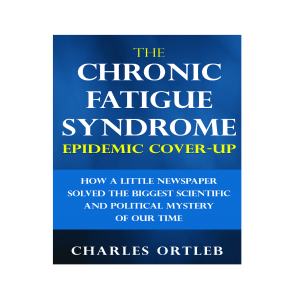

Here is a list of Rebecca Culshaw Smith’s 20 most important points about HIV and AIDS
Rebecca Culshaw Smith’s Substack, “The Real AIDS Epidemic,” highlights core criticisms of mainstream HIV/AIDS theory, medical testing, pharmaceutical practices, and challenges to scientific orthodoxy. Based on her popular posts, interviews, and thematic content, these are 20 of the most important ideas advanced on her platform:
1. Questioning the existence of HIV as a unique virus, arguing that classic virological isolation (Koch’s postulates) has not been fulfilled.
2. Highlighting the non-specificity and cross-reactivity of HIV antibody tests, leading to potential misdiagnosis.
3. Criticism of “viral load” PCR tests for not detecting whole pathogens but only RNA fragments.
4. Noting the shifting criteria for HIV test positivity over time, calling diagnostic standards into question.
5. Documenting long-term “non-progressors” and “elite controllers” who remain healthy without antiretroviral therapy.
6. Raising awareness of AIDS-defining illnesses in HIV-negative individuals and questioning causality.
7. Arguing that hazard from AIDS medications (e.g., AZT, Truvada, Prep) may outweigh their benefits, especially due to their toxicity and inconsistent trial results.
8. Critique of the marketing and deployment of pre-exposure prophylaxis (Prep), calling it a pharmaceutical “scandal” targeting people not at significant risk.
9.Exploring how COVID-19 public health narratives mirror what she views as deception and fear tactics from the AIDS era.
10. Disputing the epidemiological narrative that AIDS is globally caused by a single infectious agent, and highlighting massive regional/demographic inconsistencies.
11. Exposing groupthink, censorship, and reputational shaming used against scientists questioning the HIV/AIDS paradigm.
12. Emphasizing failures of antiretroviral therapy in preventing disease progression for many patients.
13.. Explaining the statistical and mathematical problems in foundational HIV/AIDS research and the “shaky foundation” of guiding studies.
14. Arguing that AIDS-defining diseases may often reflect toxicity, malnutrition, or existing comorbidities, not a distinct viral syndrome.
15. Linking historical and social factors (such as drug use, pharmaceutical incentives) to the creation and persistence of the HIV/AIDS establishment.
16. Alerting readers to issues of false positive antenatal screening and broader concerns about mass diagnostic testing in medicine.
17. Suggesting that “virus-like particles” in the body are misidentified as pathogens, not proof of HIV’s existence.
18. Forecasting that advances in AI and technology may help overturn scientific “consensus” by increasing transparency and debate.
19 Publicly refuting hit pieces and attempts to “cancel” her work as ideological suppression, not science.
20.Advocating for a return to fundamental scientific rigor and genuine skepticism in medical research, especially around virology and public health narratives.
These topics synthesize her core objections to HIV/AIDS orthodoxy and frame her Substack as a point of dissent and critique against modern medical paradigms and their social consequences.
More Episodes
All Episodes>>Create Your Podcast In Minutes
- Full-featured podcast site
- Unlimited storage and bandwidth
- Comprehensive podcast stats
- Distribute to Apple Podcasts, Spotify, and more
- Make money with your podcast


